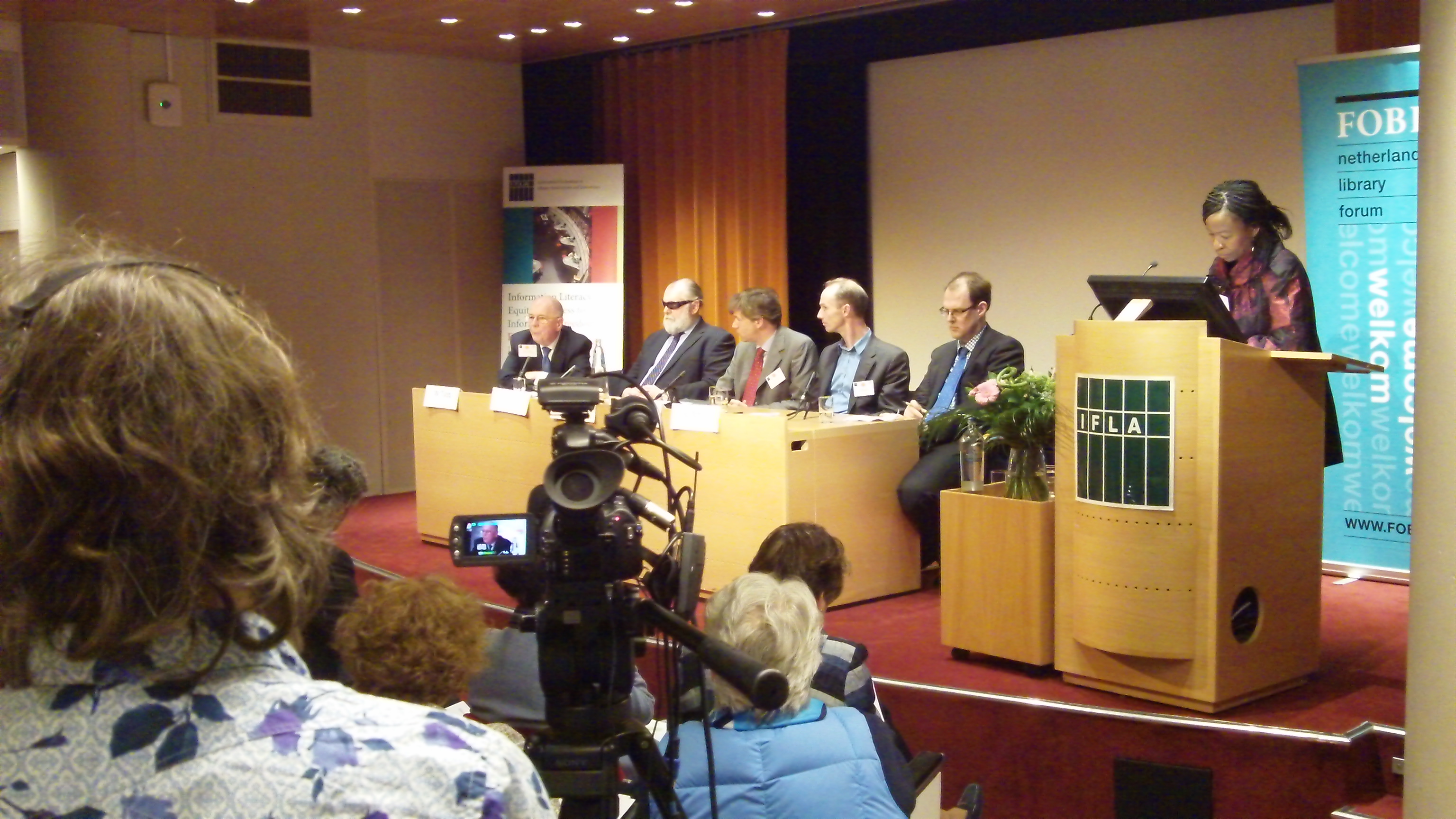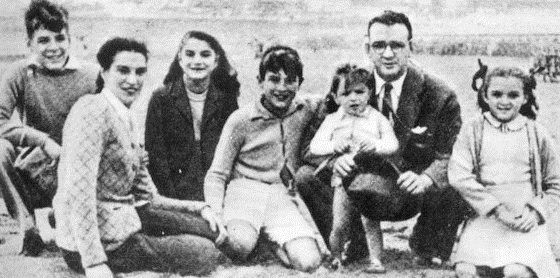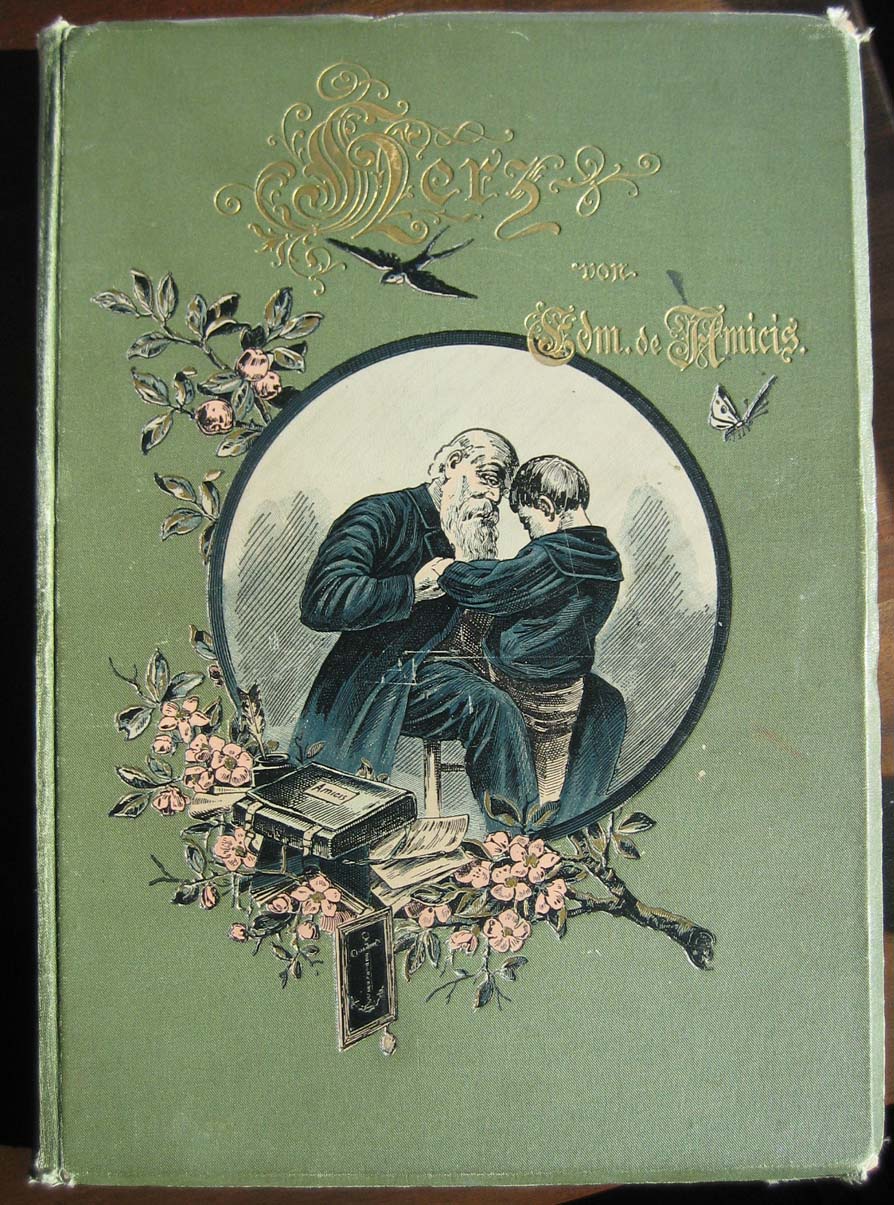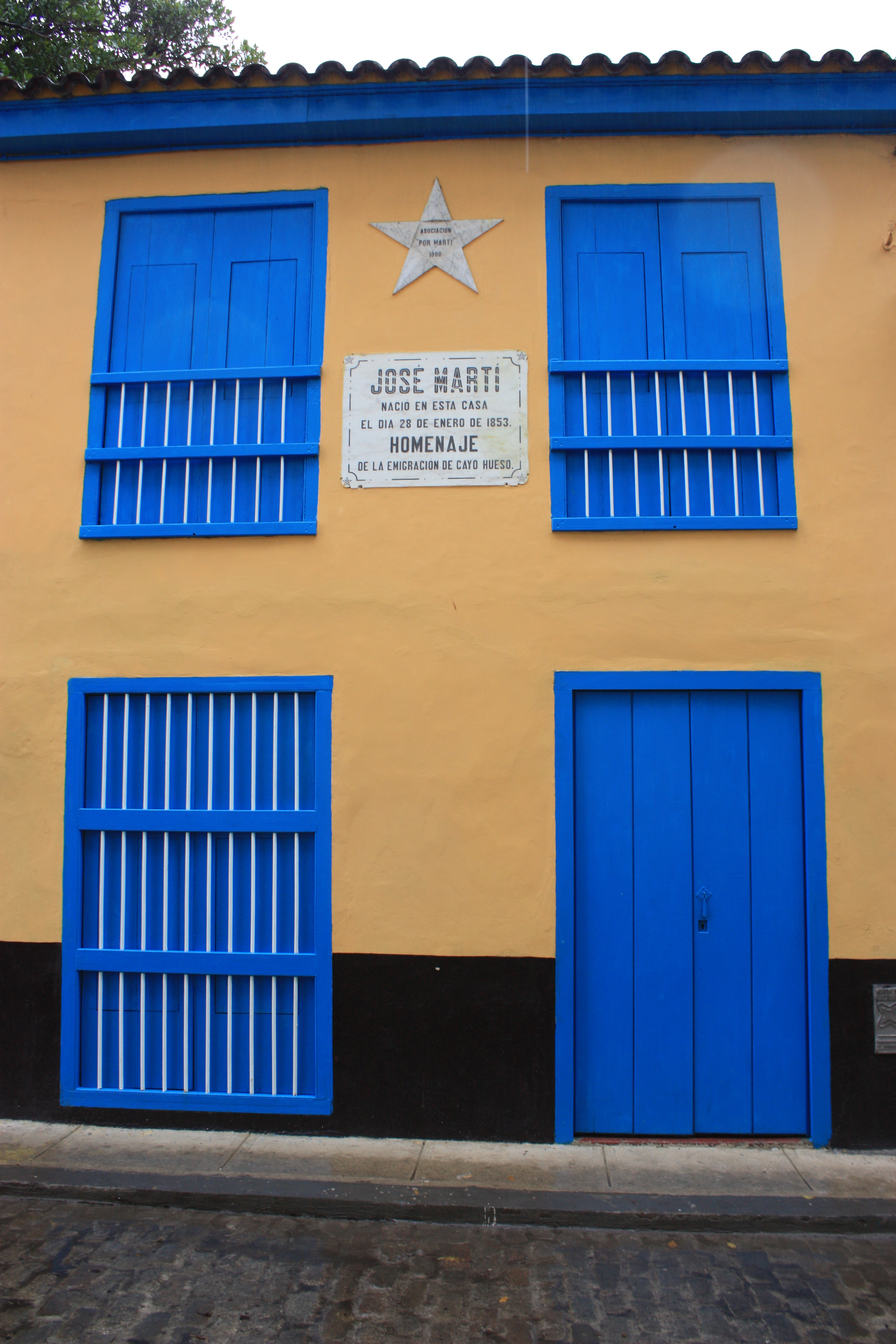|
Marta Terry González
Marta Terry González (May 7, 1931 – June 18, 2018) was a Cuban librarian. She is known for her leadership of several important libraries in post-revolutionary Cuba, including those of the Junta Central de Planificación (JUCEPLAN), Casa de las Américas, and the National Library José Martí, as well as her role in the International Federation of Library Associations and Institutions (IFLA). In these roles, she worked with well-known Cuban revolutionaries such as Che Guevara and Haydée Santamaría. Early life As a child, Terry González helped her grandmother collect cigar butts after curfew so that her great-grandmother could smoke them in a pipe. She was homeschooled as a child due to her poor health. Her mother had died when she was young, so she was taught at home by her grandmother and her aunts, who worked as teachers. Several books left a strong early impression on her, including Corazón de Edmundo de Amicis and works by José Martí. Education In 1948, Terry Gonzá ... [...More Info...] [...Related Items...] OR: [Wikipedia] [Google] [Baidu] |
Cuba
Cuba ( , ), officially the Republic of Cuba ( es, República de Cuba, links=no ), is an island country comprising the island of Cuba, as well as Isla de la Juventud and several minor archipelagos. Cuba is located where the northern Caribbean Sea, Gulf of Mexico, and Atlantic Ocean meet. Cuba is located east of the Yucatán Peninsula (Mexico), south of both the American state of Florida and the Bahamas, west of Hispaniola ( Haiti/Dominican Republic), and north of both Jamaica and the Cayman Islands. Havana is the largest city and capital; other major cities include Santiago de Cuba and Camagüey. The official area of the Republic of Cuba is (without the territorial waters) but a total of 350,730 km² (135,418 sq mi) including the exclusive economic zone. Cuba is the second-most populous country in the Caribbean after Haiti, with over 11 million inhabitants. The territory that is now Cuba was inhabited by the Ciboney people from the 4th millennium BC with the Gua ... [...More Info...] [...Related Items...] OR: [Wikipedia] [Google] [Baidu] |
University Of Havana
The University of Havana or (UH, ''Universidad de La Habana'') is a university located in the Vedado district of Havana, the capital of the Republic of Cuba. Founded on January 5, 1728, the university is the oldest in Cuba, and one of the first to be founded in the Americas (the oldest, National University of San Marcos, was founded in Lima in 1551). Originally a religious institution, today the University of Havana has 15 faculties (colleges) at its Havana campus and distance learning centers throughout Cuba. History Founded by Dominican friars belonging to the Order of Preachers (''la Orden de Predicadores'') as Real y Pontificia Universidad de San Gerónimo de la Habana (''Royal and Pontifical University of Saint Jerome of Havana'') with six original faculties: Art and Philosophy, Theology, Canons, Law, and Medicine. In 1842, the university changed its status to become a secular, royal and literary institution. Its name became Real y Literaria Universidad de La Habana ('' ... [...More Info...] [...Related Items...] OR: [Wikipedia] [Google] [Baidu] |
Casa De Las Américas
Casa de las Américas is an organization that was founded by the Cuban Government in April 1959, four months after the Cuban Revolution, for the purpose of developing and extending the socio-cultural relations with the countries of Latin America, the Caribbean and the rest of the world. Originally a publishing house and information center, it has developed into the best-known and most prestigious cultural institution in Cuba. History The organization was founded by Haydée Santamaría, a member of the 26th of July Movement and one of the few women directly involved in the revolutionary brigades. Under her leadership, it became over the next two decades a physical and cultural refuge for artists and writers who had been persecuted in their homelands for their advocacy of social justice and opposition to military dictatorship. The organization awards the Casa de las Américas Prize, one of the oldest and most prestigious prizes in Latin American literature. It also researches, s ... [...More Info...] [...Related Items...] OR: [Wikipedia] [Google] [Baidu] |
National Library José Martí
The National Library José Martí (Spanish: ''Biblioteca Nacional José Martí'') is the national library of Cuba. It is located in Havana and named after the national hero José Martí. This library was established on October 18, 1901. BNJM is a partner in the Digital Library of the Caribbean, contributing digitized materials to share with the world as Open Access. Information about the extensive holdings are available through WorldCat. Its current headquarters was built between 1952 and 1957. It has more than 4 million printed copies. See also * List of national libraries * List of libraries in Cuba References External links Biblioteca Nacional José MartíMaterials from the collections of the National Library José Martíavailable as Open Access in the Digital Library of the Caribbean Materials from the collective work by the National Library José Martí and other partners in the ''Celebrating Cuba'' initiativeavailable as Open Access in the Digital Library of the Cari ... [...More Info...] [...Related Items...] OR: [Wikipedia] [Google] [Baidu] |
International Federation Of Library Associations And Institutions
The International Federation of Library Associations and Institutions (IFLA) is the leading international body representing the interests of people who rely on libraries and information professionals. An independent, non-governmental, not-for-profit organization, IFLA was founded in Scotland in 1927 and maintains headquarters at the National Library of the Netherlands in The Hague. IFLA sponsors the annual IFLA World Library and Information Congress, promoting universal and equitable access to information, ideas, and works of imagination for social, educational, cultural, democratic, and economic empowerment. IFLA also produces several publications, including IFLA Journal. IFLA closely partners with UNESCO, resulting in several jointly produced manifestos. IFLA is also a founding member of Blue Shield, which works to protect the world's cultural heritage when threatened by wars and natural disaster. History IFLA was founded in Edinburgh, Scotland, on 30 September 1927, when li ... [...More Info...] [...Related Items...] OR: [Wikipedia] [Google] [Baidu] |
Che Guevara
Ernesto Che Guevara (; 14 June 1928The date of birth recorded on /upload.wikimedia.org/wikipedia/commons/7/78/Ernesto_Guevara_Acta_de_Nacimiento.jpg his birth certificatewas 14 June 1928, although one tertiary source, (Julia Constenla, quoted by Jon Lee Anderson), asserts that he was actually born on 14 May of that year. Constenla alleges that she was told by Che's mother, Celia de la Serna, that she was already pregnant when she and Ernesto Guevara Lynch were married and that the date on the birth certificate of their son was forged to make it appear that he was born a month later than the actual date to avoid scandal. ( Anderson 1997, pp. 3, 769.) – 9 October 1967) was an Argentine Marxist revolutionary. A major figure of the Cuban Revolution, his stylized visage has become a ubiquitous countercultural symbol of rebellion and global insignia in popular culture. As a young medical student, Guevara traveled throughout South America and was radicalized by the poverty, hunger, ... [...More Info...] [...Related Items...] OR: [Wikipedia] [Google] [Baidu] |
Haydée Santamaría
Haydée Santamaría Cuadrado (December 30, 1922 – July 28, 1980) was a Cuban revolutionary and politician, regarded as a heroine in post-revolutionary Cuba. She participated in the assault on Moncada Barracks in Santiago de Cuba on July 26, 1953, an action for which she was imprisoned along with Melba Hernández. She was a founding member of the Central Committee of the Communist Party of Cuba. and one of the first women to join the PCC. She maintained a high position in its leadership throughout her life. Having participated in the attack on the Moncada Barracks, Haydée Santamaría is among a relatively small group of people who were involved in every phase of the Cuban Revolution, from its inception to its fruition. Early life Haydée Santamaría was born to Spanish immigrants Joaquina Cuadrado and Abel Benigno Santamaría on December 30, 1922, in Encrucijada, Cuba, on the Constancia sugar refinery. The eldest among five children, she and her siblings Aida, Abel, Aldo, and A ... [...More Info...] [...Related Items...] OR: [Wikipedia] [Google] [Baidu] |
Heart (novel)
''Heart'' ( it, Cuore ) is a children's novel by the Italian author Edmondo De Amicis who was a novelist, journalist, short story writer, and poet. The novel is his best known work to this day, having been inspired by his own children Furio and Ugo who had been schoolboys at the time. It is set during the Italian unification, and includes several patriotic themes. It was issued by Treves on October 18, 1886, the first day of school in Italy, and rose to immediate success. Through its investigation of social issues such as poverty, ''Heart'' shows the influence of left-wing ideologies on De Amicis' work (he was later to join the Italian Socialist Party). Because of this, the book remained influential (and the staple of many textbooks) in countries of the Eastern Bloc. On the other hand, the book's strong evocation of Italian nationalism and patriotism also made it very welcome in Fascist Italy. Plot and characters The novel is written in a diary form as told by Enrico Bottini ... [...More Info...] [...Related Items...] OR: [Wikipedia] [Google] [Baidu] |
José Martí
José Julián Martí Pérez (; January 28, 1853 – May 19, 1895) was a Cuban nationalist, poet, philosopher, essayist, journalist, translator, professor, and publisher, who is considered a Cuban national hero because of his role in the liberation of his country from Spain. He was also an important figure in Latin American literature. He was very politically active and is considered an important philosopher and political theorist. Through his writings and political activity, he became a symbol of Cuba's bid for independence from the Spanish Empire in the 19th century, and is referred to as the "Apostle of Cuban Independence". From adolescence, he dedicated his life to the promotion of liberty, political independence for Cuba, and intellectual independence for all Spanish Americans; his death was used as a cry for Cuban independence from Spain by both the Cuban revolutionaries and those Cubans previously reluctant to start a revolt. Born in Havana, Spanish Empire, Martí began h ... [...More Info...] [...Related Items...] OR: [Wikipedia] [Google] [Baidu] |
1931 Births
Events January * January 2 – South Dakota native Ernest Lawrence invents the cyclotron, used to accelerate particles to study nuclear physics. * January 4 – German pilot Elly Beinhorn begins her flight to Africa. * January 22 – Sir Isaac Isaacs is sworn in as the first Australian-born Governor-General of Australia. * January 25 – Mohandas Gandhi is again released from imprisonment in India. * January 27 – Pierre Laval forms a government in France. February * February 4 – Soviet leader Joseph Stalin gives a speech calling for rapid industrialization, arguing that only strong industrialized countries will win wars, while "weak" nations are "beaten". Stalin states: "We are fifty or a hundred years behind the advanced countries. We must make good this distance in ten years. Either we do it, or they will crush us." The first five-year plan in the Soviet Union is intensified, for the industrialization and collectivization of agriculture. * February 10 � ... [...More Info...] [...Related Items...] OR: [Wikipedia] [Google] [Baidu] |
2018 Deaths
This is a list of deaths of notable people, organised by year. New deaths articles are added to their respective month (e.g., Deaths in ) and then linked here. 2022 2021 2020 2019 2018 2017 2016 2015 2014 2013 2012 2011 2010 2009 2008 2007 2006 2005 2004 2003 2002 2001 2000 1999 1998 1997 1996 1995 1994 1993 1992 1991 1990 1989 1988 1987 See also * Lists of deaths by day The following pages, corresponding to the Gregorian calendar, list the historical events, births, deaths, and holidays and observances of the specified day of the year: Footnotes See also * Leap year * List of calendars * List of non-standard ... * Deaths by year {{DEFAULTSORT:deaths by year ... [...More Info...] [...Related Items...] OR: [Wikipedia] [Google] [Baidu] |
Women Librarians
A woman is an adult female human. Prior to adulthood, a female human is referred to as a girl (a female child or adolescent). The plural ''women'' is sometimes used in certain phrases such as "women's rights" to denote female humans regardless of age. Typically, women inherit a pair of X chromosomes, one from each parent, and are capable of pregnancy and giving birth from puberty until menopause. More generally, sex differentiation of the female fetus is governed by the lack of a present, or functioning, SRY-gene on either one of the respective sex chromosomes. Female anatomy is distinguished from male anatomy by the female reproductive system, which includes the ovaries, fallopian tubes, uterus, vagina, and vulva. A fully developed woman generally has a wider pelvis, broader hips, and larger breasts than an adult man. Women have significantly less facial and other body hair, have a higher body fat composition, and are on average shorter and less muscular than men. Through ... [...More Info...] [...Related Items...] OR: [Wikipedia] [Google] [Baidu] |






.jpg)